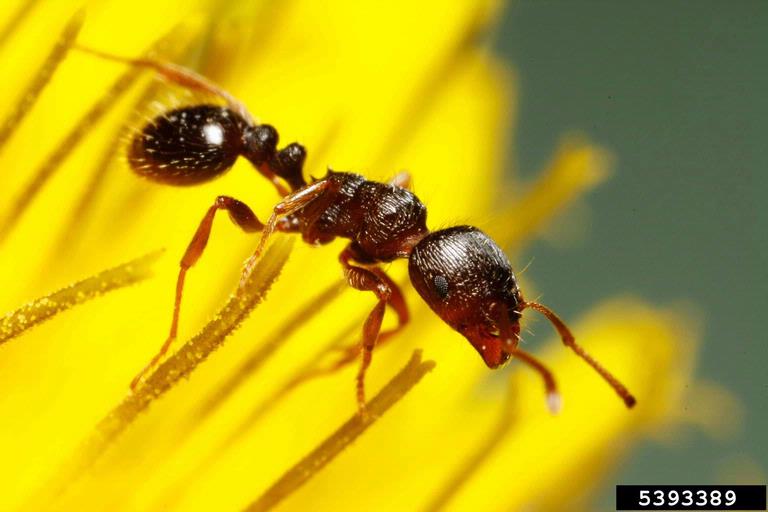Pavement Ants
How to Get Rid of Pavement Ants

Effective treatment of either the interior or exterior or both if need be is done using a liquid residual and or dust insecticide.
This type of treatment is good for a seasonal or one-time occurrence. It will usually eliminate the ants on the same day and it has a 30-day warranty.
Several treatments may be required using bait and dust for reoccurring pavement ant problems. This is typical in buildings that are slab on grade, no basement or built on rock. These types of structures can have pavement ants 12 months of the year, regardless of the outdoor climate. This type of treatment has the best long term control as it is the whole colony that is targeted, not just the foraging ants. There is a 30-day warranty following the final treatment.
Either of the above treatments requires a vacancy of 6 hours total. Children under 1 year and people with respiratory issues should remain out for 24 hours.
Each year after the initial treatment, Miller Pest Control highly recommends having an exterior preventive treatment. This treatment will help reduce the risk of re-infestation on the interior of the structure and re-guarantees the original interior work.
How to Identify a Pavement Ant Infestation
The pavement ant is distinguished by one pair of spines on the back, two nodes on the petiole (in between the second and third body segments), and grooves on the head and thorax.
- Colour: Pavement ants are light brown to black with appendages lighter than the rest of the body.
- Size: Approximately 2.5 to 3 mm long, with parallel lines on head and thorax.
They often build their nests along sides of homes or parts of homes that are constructed on concrete slabs. They may enter homes and businesses through small openings windows and doors, basement walls, or concrete floors.
How to Prevent a Pavement Ant Infestation?
Pavement ants can gain access to homes through small openings. They tend to move into homes in winter for food and shelter. The best ways to deter these pests are:
- Sealing openings around doors, windows and your foundation.
- Trimming overhanging trees can help reduce access to your home.
- Keep food preparation areas and floors clear of crumbs
If pavement ants do become an issue in your home contact Miller Pest Control to help get rid of them.
Possible Health Concerns
None. Pavement ants are docile and not aggressive, preferring to avoid confrontation rather than stinging to defend themselves.
About Pavement Ants
The pavement ant (Tetramorium caespitum) was originally native to Europe, although it has become common in North America. It is well adapted to urban environments and takes its name from its tendency to nest under the pavements and concrete structures.
During the late spring and early summer, colonies attempt to conquer new areas and often attack nearby enemy colonies. This results in huge sidewalk battles, sometimes leaving thousands of ants dead. In summer, the ants dig out the sand between the pavements to vent their nests.
They will eat almost anything, including other insects, seeds, honeydew, honey, bread, meats, nuts, ice cream and cheese. Although they do not usually nest inside buildings, they may become a minor nuisance entering homes attracted by food left out.

